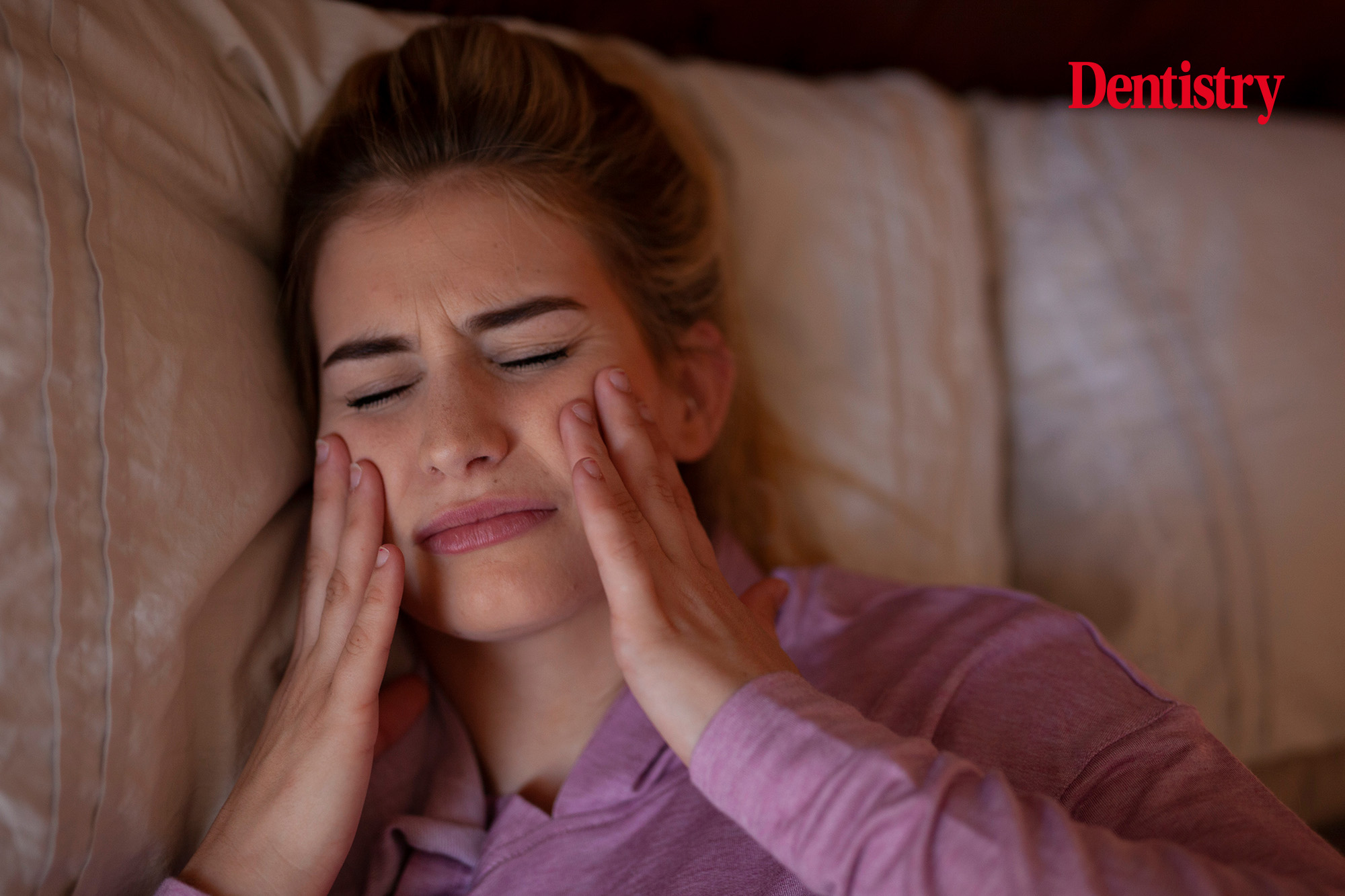
Setareh Pirmorad explains the causes, signs and treatment options for bruxism.
The American Academy of Orofacial Pain defines bruxism as a ‘total parafunctional daily or nightly activity that includes grinding, gnashing or clenching of the teeth. It takes place in the absence of subjective consciousness and can be diagnosed by the presence of tooth wear facets which haven’t resulted from the chewing function’ (Okeson, 1996).
Both adults and children can experience bruxism. Based on evidence, it seems that bruxism has a multifactorial aetiology.
Causes of bruxism
The following factors can cause bruxism:
- Disturbance in the central dopaminergic system (Lobbezoo and Naeije, 2001)
- Smoking – nicotine stimulates the central dopaminergic activity. Bruxism is almost two times more common in smokers compared with non-smokers (Lavigne and colleagues, 1997; Madrid and colleagues, 1998)
- Alcohol (Hartman, 1994)
- Diseases
- Trauma/occlusion
- Heredity
- Stress and other psychological factors
- Medications (for example, long-term use of selective serotonin reuptake inhibitors).
Since starting dentistry during Covid-19, many dentists (including myself) experienced many emergency appointments with patients suffering from broken fillings, cracked teeth and excruciating jaw pain. The majority of these cases were the result of bruxism.
Evidently, the virus wasn’t the cause of these dental complications; however, there was an increased level of stress in the majority of the population.
Reasons for heightened stress levels during this time included changes in lifestyle/life routines, unemployment rates, isolation (which affected mental health), and losing loved ones. Elevated levels of stress and anxiety have a well-established link to bruxism.
Looking for signs
As dentists, we should conduct a thorough examination, including asking specific bruxism-related questions, which help to determine the risks and signs of bruxism in our patients.
These questions could consist of:
- Do you grind during the day or at night? Have you/anyone else noticed it when you sleep?
- Are you under a lot of stress?
- Do you wake up with jaw pain, headaches around the temples, sore gums or teeth?
- Have you noticed any tooth wear or frequent visits to the dental practice due to fractured teeth/fillings?
- Do you wear a night guard?
Clinical signs
According to Lal and colleagues (2022), clinical signs of bruxism can consist of:
- Fractures – this is very common in natural teeth, dental restorations, prosthesis and even dental implants
- Tooth wear – attrition of the teeth (tooth wear caused by tooth-to-tooth contact) (Darby and Walsh, 2009)
- Hypersensitive or mobile teeth
- Hypertrophy, pain and stiffness of masticatory muscles
- Temporomandibular joint (TMJ) and preauricular region pain
- Crepitus of TMJ
- Temporal headaches (especially in the morning)
- Neck and shoulder pain
- Radiographs can show signs of periodontal ligament widening.
Diagnosis and treatment options
In addition to conducting a thorough exam, diagnosing and finding risk factors, we should always advise and offer treatment options to not only prevent bruxism but to also manage symptoms and protect the teeth.
These can include:
- Monitoring – some patients may not want to do anything and aren’t too concerned about it. Even after showing them the clinical signs, they may not think they grind, especially if they do it in their sleep. It is still ideal to explain the risks
- Trying to subconsciously stop – it is our role as dentists to advise our patients, even if they disagree or decline treatment. Strategies include putting a phone notification for every 30 minutes that reminds the patient not to grind. Other lifestyle changes, such as avoiding chewing gum for a long period, getting enough sleep or avoiding stimulating substances in the evenings can also help
- Night guards and splints – worn at night to help prevent fractures, tooth wear and other complications of bruxism. Splints can allow some reduction in muscle tone
- Referral – in cases of severe TMJ disorder and further investigations.
For references, please email [email protected].
Follow Dentistry.co.uk on Instagram to keep up with all the latest dental news and trends.


